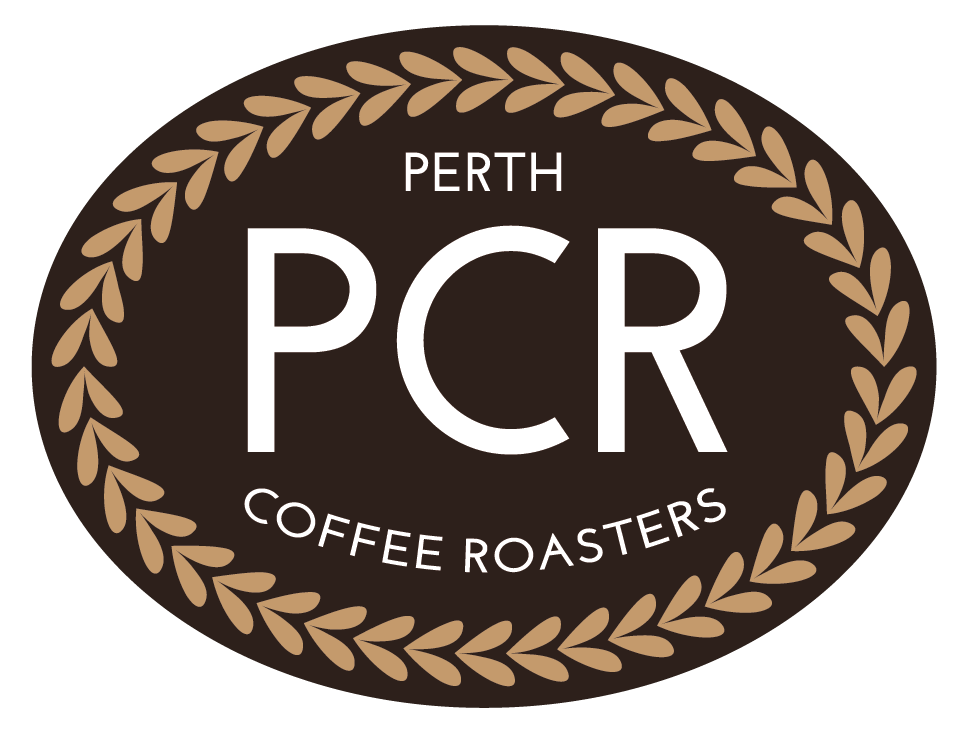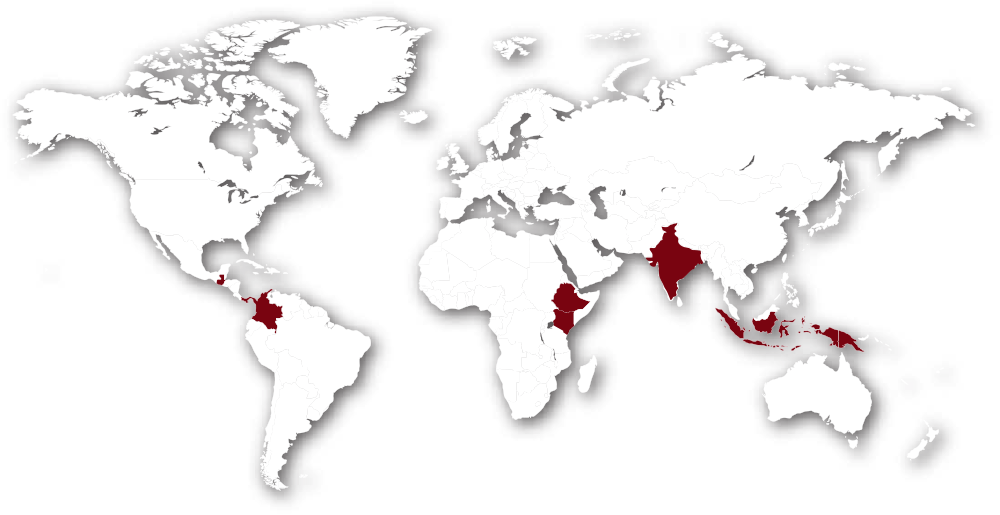Where is our coffee roasted and where do our beans come from? How long does a roast take and how many cups does a roast provide? We sat down with our master roaster John Raynor to answer all of your questions.
How did you get into coffee roasting?
Jill and I have always loved a nice cup of coffee and I suppose in the last 20 years we’ve been fortunate to be part of this coffee culture revolution we’ve seen. A few years ago we had sold the business that we had and we were looking to get into something we thought would be fun and interesting – and we decided to get into a café. It proved to be fun and interesting so we got into another, we finished up being involved in three cafes and learnt a bit more about coffee. We decided from there we wanted to go into coffee roasting and that’s really how it started. We’ve been in coffee roasting coming up to eight years now and it’s a fun, exciting thing to be part of.
What’s your favourite part about your job?
I really enjoy roasting coffee – I love so much of it. I find it interesting, I find it enjoyable, I find it at times challenging, but also I find it really relaxing and comfortable. It took me a little while to pick it up but now it’s like second nature to me. One of the things I love, is on a cold, wintery morning, you open the roaster door and out comes all these bouncing, chocolate brown hot coffee beans. The aroma is just mind-boggling! The aroma is fantastic and (so is) the warmth – the temperature that comes out. The beans just clatter around in the cooling tray and it’s all pretty exciting. Another thing I like about coffee roasting is it’s a finite process. Our roasting process takes 15 minutes – you can start a roast and see it all the way through. In 15 minutes we roast enough coffee beans for a café to get about 1,000 cups out of it. So in 15 minutes, I open the door, look at the roast going around the cooling tray and I think ‘wow, 1,000 cups of coffee. I wonder who’s going to have these coffees and where are they going to have them! Will they be meetings or birthday coffees, what will they be?’
Where do you do your roasting and what’s the process like?
We have two roasting machines, they are housed in our roastery in Osborne Park and that’s where we do all of our coffee roasting. The two roasters are basically like, they’re powered by gas so they’re probably like a gas oven but they rotate. The reason they rotate is the coffee beans are pretty small particles and we want to make sure in the roasting process they get evenly roasted so the particles don’t get scorched, overbaked or burnt. Our coffee starts life as green beans, they don’t have any flavour. They’re dusty, they’re husky – they’re not all that attractive the green beans! We use a mix of four different beans. Each of the beans have a different flavour characteristic. So for example one of the beans we use is a Columbian bean (a bean from Columbia), and that’s got a bit of a chocolate-y, caramel-y sweet-style flavour to it. Another bean we use is a Peaberry bean. The berry part of that brings the citrus or fruity flavour to the coffee. A little bit of that is like mandarin or an orange, a nice citrus fruity feel. Too much of the Peaberry bean and what you get is a bit of a tart, sour, lemon-y type taste to it. So we find these four beans, when combined together, give a really nice coffee.
So life starts out with our green beans. We have our roaster warmed up like any good oven, we pop the green beans in and we gradually increase the temperature to take the beans through their process from being green beans to being – 15 minutes later – to beautiful, dark, chocolate, flavoursome coffee beans. Our roasting process takes about 15 minutes, you’ve got to be really precise and monitor the temperature and the timing. We have a sample gun where you take a sample out and you can see the beans changing colour from the green to the nice chocolate brown. After about 15 minutes, we open the door and the beans come clattering out in to the cooling tray, they stay in the cooling tray for about 10 minutes or so and generally they cool down to room temperature after about 10 minutes. Then, we take them out of the cooling tray and leave them for about 24 hours, to de-gas and to let the flavours fully evolve. These are some beans I roasted yesterday afternoon, we bagged them, this is a sealed plastic bag without any holes in it and you can see it’s got a bit of a pillow effect. This is where the gas has been coming out. If we pop this, the gas comes out and there’s a beautiful coffee aroma which is lovely. How our beans finish up after a day, we bag them in bags like this which have a vacuum seal. It keeps the flavour and freshness in. These are how the customers get the beans! So within 15 minutes we go from green beans, to beautiful roasted beans and in that time we produce enough coffee for about 1,000 cups of coffee.
Another thing I really like about roasting is that many people don’t have the opportunity to know what happens with roasting, they don’t understand it or don’t learn about it. I do like helping people understand what happens in the roasting process. Another thing I really enjoy is teaching people to roast! I’ve had the chance to teach and train three or four people in how to roast and that’s really fulfilling and rewarding as well.
What is your favourite type of coffee to drink?
My favourite blend is our Kinetic Dark. It’s a really nice mix because it has a nice strong flavour to get enough ‘coffee’ kick out of it but it has no aftertaste or bitterness, it doesn’t have an impact on your pallet. So that’s my preferred coffee to drink.
Is it your most popular blend?
Yes it seems to appeal to a lot of different coffee pallets and tastes. It’s a lovely to start your day with a delicious coffee. The kinetic dark is a great way to kick your day off.
What is your favourite blend to roast?
In terms of roasting I think the roast I actually like to do the most is the decaf roast. It is the most challenging of the roasts because the decaf bean started out life with caffeine in it. But of course when it comes to us as a green bean it’s already been put through a process where they take or leach the caffeine out of the bean. As a result, the bean has already been subject to a bit of processing and is very easily affected by the temperatures in the roasting process, so it’s always a good challenge to roast a decaf roast.


